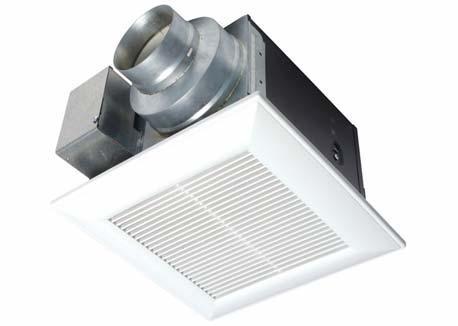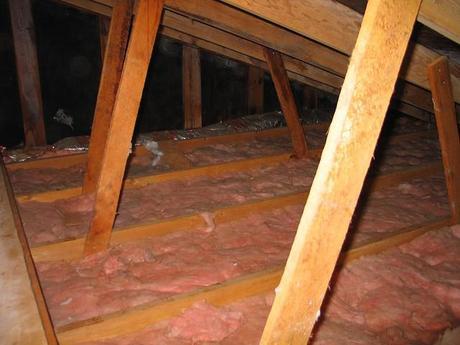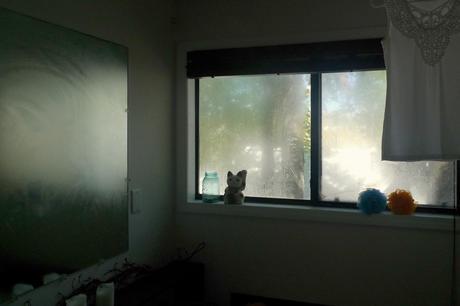You may have heard that it’s okay to run your bathroom extractor fan into the attic or upper living space of your home. This is inaccurate and can lead to severe problems in your home. Rather than extracting the air out of your home, you are simply moving it into another area of your home.
Lesson: Don’t sweep your dirty clothes under the bed when it comes time for chores.
Historically, extractor fans were vented into the attic of the home. Home builders learned from this lesson and began running exhaust ventilation ducts to the outside of the home. For this to work properly, air ducts must be properly sealed, meaning no tears or holes that would allow moisture to escape into the wrong spots.

Panasonic’s Third Generation WhisperGreen Ventilation Fan. Learn More.
Purpose of the Extractor Fan
The extractor fan (exhaust fan) removes humidity and moisture from the bathroom. The fan sucks in air from the bathroom and blows it out of through a vent that is runs behinds above the ceiling. It works in the same way that a kitchen exhaust hood does except moisture is being moved instead of smoke.
The extractor fan is a necessity in any bathroom regardless of the regional environment that you’re in. Moisture can cause severe problems in the home like mold, mildew, and dry rot. This can cost thousands of dollars in repairs and lead to possible roof collapse in severe cases.
Panasonic just released the 3rd Generation WhisperGreen Ventilation Fan that detects humidity and alters the speed of the fan accordingly. Make sure your extractor fan has enough CFM’s to maintain a safe and health bathroom environment!
What Happens When You Vent to the Attic
The attic is not built in the same way as the rest of your home. The attic is not insulated so it generally stays at exterior temperatures. This is especially true during colder weather. Moisture will precipitate out of the attic. When this vented air is cooled to match outdoor temperatures, it falls below its “dew point” and is unable to withhold the moisture. The result is that it will literally begin to “rain” inside your attic.

Image courtesy Ryan McFarland.
Condensation will begin to form on the wood rafters and sheathing. This will eventually lead to rotted rafters and kick you out of your own home while repairs are made. If left undetected or unrepaired, extreme rot can lead to a collapse of the entire roof above your head. One snowy/rainy season can cause condensation and mold to pop up even if running air to the attic hasn’t been a problem in the past.
In the case that you have waited too long, you will have to pay a environmental expert to perform a mold neutralization and prevention treatment before your home is safe to live in again. The key is that air must flow through the attic at a sufficient rate. Lack of air flow means that condensed air can sit in your attic and form mold. Proper ventilation will prevent this from happening.
Why You Need to Route it Up and Out
Venting to the attic is sort of a shortcut method that, although not horrible, it’s not something that you want to see your contractor doing (or yourself for that matter). Some people say that dry areas do not need extractor fans to run out of the roof. Make sure you save for a rainy day if you plan to follow this advice.

This is what happens if you’re bathroom is not properly ventilated. Image courtesty V.H.D..
What if you have a full-house where you have people taking showers 6 times a day? Much more humidity and your attic may start to see some deterioration as a result. Do you want to replace you entire roofing rafters or do you want to run a 6″ duct 10′ higher to the roof? You won’t really save much but the potential that it could cost you is just not worth it.
It’s never okay to vent directly into the attic EVEN IF you’re attic is vented. Most municipalities require extractor and exhaust fans to be vented to the outside of the building with an vent cap. Excessive moisture will cause condensation on roof members and insulation. This will cause mold and could leave your home unlivable. Case in point, don’t vent your extractor fan to the attic.
Additional Resources:
- Changing those Pesky Exhaust Fans
- How to Get Rid of Shower Mold
About the Author
Cheryl Khan is a contributing author to the Tradewinds Imports Blog. Designer by trade and writer by nature, she enjoys keeping up to date with the latest trends, designs, products, and color palettes of the year.
